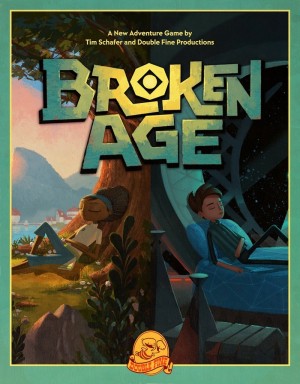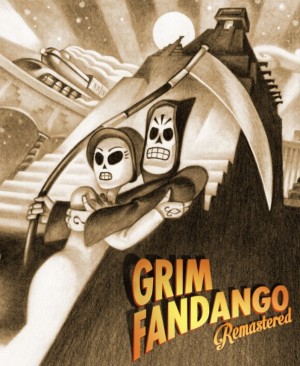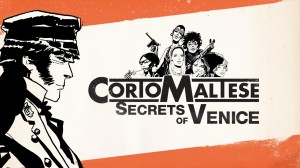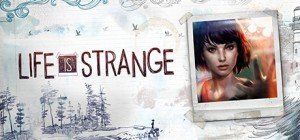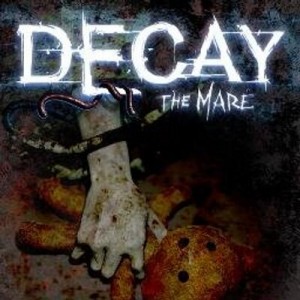Review for Broken Age

When Broken Age’s first act released last January, high expectations came with it. As gaming’s first multimillion-dollar Kickstarter success, it embodied Tim Schafer’s longstanding dream to make a traditional adventure game in the post LucasArts era, with more than 87,000 fans chipping in to make it a reality. Broken Age wasn’t likely to CHANGE EVERYTHING!!!, but for longtime fans of the genre, its initial release represented a significant milestone.
The game got off to a good start, with Act 1 drawing us into the lives of protagonists Shay and Vella only to see their worlds subverted by sinister outside forces—a charming, tantalizing glimpse over far too soon, with a massive cliffhanger to boot. And then we waited. What was supposed to be a six-month gap between acts stretched into fifteen. If you want all the gory details, check out the documentary that was filmed during Broken Age’s development. But if all you care about is the game itself, you’re in luck, because the finally completed Broken Age holds its own as one of the best adventure games of this century.
Just in case you haven’t been following along since the Kickstarter campaign, Tim Schafer’s first adventure game since Grim Fandango tells the parallel stories of two teens whose paths unexpectedly converge. Depicted with a whimsical, painted art style that evokes feelings of innocence and wonder, this is a world where a spaceship is steered with controls fashioned from a baby’s crib toy and where maidens dress up like frosted cupcakes in an elaborate town-wide celebration. On the surface, Broken Age appears childlike and magical, but it doesn’t take much scratching to reveal a darker, more intricate tale beneath the fluffy facade.
The protagonists, Shay and Vella, are two fourteen-year-olds in situations vastly different yet oddly similar. Shay lives on a spaceship where he’s grown up under the watchful “eyes” of computer programs named Mom and Dad, his only playmates a herd of annoyingly chipper, sentient stuffed animals. The entire ship has been wired to keep Shay safe; decorated with smiley faces and colorful toys, it holds Shay back in childhood like the bedroom of a teenager who hasn’t yet been given the go-ahead to redecorate. He spends his days going on missions manufactured by Mom to save his stuffed animal friends from ice cream avalanches and alien snuggle attacks, taking regular breaks to be fed nutritious meals by mechanical hands and a talking spoon. Not surprisingly, the teen has begun to rebel against this suffocating, bubble-wrapped environment, and when a snap decision to sabotage one of Mom’s missions leads to the discovery of an unknown portion of the ship, an exciting and dangerous outside world suddenly appears to be within his reach.
Vella, meanwhile, has been selected for the dubious honor of representing her baking town, Sugar Bunting, in the ritual Maidens Feast celebration. Vella is to be sacrificed to Mog Chothra, a monster who has appeared every fourteen years from beyond the Plague Dam for as long as anyone can remember, because towns that don’t offer up their tastiest maidens suffer catastrophic consequences. When Vella brings up the idea of fighting Mog Chothra instead, her suggestion is laughed off—only her feisty Grandpa Beastender takes her seriously. (He remembers the good old days when their town was populated by brave warriors… a far cry from today’s pacifist bakers.) Like Shay dutifully playing Mom’s rescue games, Vella goes along with the plan to a point. Then, in a move that blatantly defies her role as a video game "princess," she breaks out of her expected trope by standing up to Mog Chothra and her world also opens up as she embarks on a quest to save other towns in the monster’s path.
At first glance, these are two separate stories with a few parallel elements: two teenage protagonists fed up with rules imposed by authority figures; two coming-of-age journeys spawned by their rebellion. But experiencing these stories side by side reveals subtle links in Act 1 that you may or may not pick up depending on what order you play them in and how thoroughly you explore. Though their paths rarely cross, you can switch between Shay and Vella whenever you want. I initially played Shay’s portion of Act 1 start to finish in one sitting—a choice I later regretted because it kept me from noticing moments where his story synced up with Vella’s. Upon my second Act 1 playthrough, the story became richer and more complex when I alternated between the characters at each major story beat. Either way, the running time for Act 1 is around 3-4 hours.
I stuck with Shay at first because I intended to switch to Vella when I got stuck on a puzzle… and that never happened. Not that I’m complaining: Act 1’s difficulty level was just right to keep me engaged, always thinking about what my next step would be but never too stymied to progress. Each character’s section has some degree of non-linearity, with more than one task to tackle at any point, so even when a solution wasn’t immediately obvious I was able to send my character in pursuit of a different goal (usually figuring out the puzzle that gave me pause along the way). The obstacles are traditional adventure game stuff, requiring item collection, exploration, and dialogue to overcome. In Act 1, Vella visits four distinct locations, each with a few people to talk to and goals to achieve, so her quest feels meatier than Shay’s—she’s traveling as she hunts down Mog Chothra, while he’s stuck in place trying to hack the ship’s controls and break free. But even marooned on a spaceship Shay has a variety of things to do, from inventory puzzles to a couple of simple logic challenges to a recurring arcade sequence that gets trickier each time.
Both the time investment and difficulty level ramp up significantly in Act 2. With the exception of a couple of new rooms, Act 2’s locations are the same places we’ve already been, but with substantial changes opening new hotspots to try out and dialogues to engage in. Vella and Shay remain separate (although their stories are more obviously linked), and switching between them becomes a necessity since several puzzle solutions rely on information you’ll find in the other character’s area. While the two protagonists don’t exactly work together, you have to think comprehensively as you hunt for clues, which makes Act 2 feel bigger than Act 1 and gives a reason to re-explore everything you thought you’d already seen. Most of the NPCs from Act 1 are still around, but their situations have changed, with the subplots of the depressed bird maiden passed over by Mog Chothra, the Dead-Eye Druids, frustrated shoemaker Car’l, and lightness guru Harm’ny Lightbeard all reaching satisfying conclusions as a result of your puzzle-solving.
Act 2’s puzzles are similar to Act 1’s, relying on inventory use, correct dialogue choices, logic, and occasionally good timing, but the later puzzles have more steps—just when you think you’ve solved something, an unexpected twist prompts one more burst of creative thinking. I solved most puzzles on my own with an a-ha! revelation and a deep sense of satisfaction; the two times I consulted a walkthrough, it turns out I was this close. It’s not every day that an adventure game challenges while staying fair and accessible, so I appreciate the care that went into Broken Age’s puzzle design. There was one puzzle that I didn’t quite get, involving a sequence of remote control operations around the spaceship, but I managed to solve it anyway; this was the only point when Act 2’s gameplay left me underwhelmed. On the flip side, several clever puzzles—such as one that requires describing a step-by-step diagram to a character who claims to be a “verbal learner” and another that involves adapting an antiquated star chart to work on Shay’s ship—are great examples of why Tim Schafer’s adventure games are fondly remembered, and I genuinely enjoyed the time I spent pondering them. Act 2 took me just over 8 hours, bringing my full playtime to nearly 12 hours. That’s more than I anticipated based on Act 1’s length, and it makes the long wait for the conclusion easier to swallow.
As expected, Schafer’s writing is witty and wonderful. The game is peppered with great moments that happen “just because,” like rotating through Shay’s comical cereal choices or leaving his spoon babbling on the counter long enough for it to embarrass itself. Some players gauge a game’s humor by how often they laugh out loud, and I’ll admit that much of Broken Age’s writing is more charming than knee-slapping funny. But even if my running tally of LOLs was low, I thoroughly enjoyed the absurdity of Shay and Vella’s situations. The other maidens Vella encounters see their sacrifice to Mog Chothra as an honor, to the point of throwing their dolled-up selves at the slobbering beast—there’s something inherently wrong and uncomfortable about it, and that’s why it’s great. Same with the lanky Shay crammed into the engine car of a toy train, rolling his eyes while his stuffed animal friends scream and cower over their imminent free fall down a phony mountain. Broken Age’s situational comedy is clever and meaningful, particularly when it becomes clear that the farce is only a frosting topper on a cake made from more mature, even sinister ingredients.
The intensity of Act 1’s surprise revelation is never duplicated in Act 2, but the story does build to its natural conclusion with most of the raised questions answered. One story point I had trouble wrapping my head around involves the sudden introduction of two new characters close to Shay; eventually I bought the explanation for their presence and I definitely got the joke, but the long delay between Acts may have made me less willing to accept it at first. It was great to see Vella’s family again in Act 2—especially her kid sister Rocky, who’s authentically childlike and makes a great BFF to cloud dweller M’ggie—but one brief appearance from another Sugar Bunting resident had me scratching my head. But these are small complaints about a story that’s generally well-written, entertaining, and doesn’t take itself too seriously, even with some heavy themes about leaving childhood behind and standing up to societal expectations simmering beneath the surface.
With crowdfunded games there’s a risk of backer involvement encroaching on the game’s design, but Broken Age isn’t full of jarring in-jokes (at least, none that I noticed). One of its best characters, however, has backers to thank. A throwaway originally conceived for an early engine test, Curtis the Lumberjack was written into the game after backers expressed their love for him—and Broken Age is better for it. Convincingly voiced by Wil Wheaton, Curtis is a paranoid slacker who fears the trees surrounding his cabin have it in for him. Knowing his origin ahead of time I feared he’d seem shoehorned in, but he’s smoothly integrated into an encounter with Vella as she’s on her way from one Mog Chothra pit stop to another. Curtis ended up my favorite supporting character in Act 1, responsible for some of Broken Age’s most random and refreshing humor. (He has a new schtick in Act 2, but I’ll admit I didn’t find this incarnation quite as funny as his original paranoia.)
In many ways, Broken Age feels like an adventure game from a bygone era, but it definitely doesn’t look like one. The unique 2D graphics make Shay and Vella’s surroundings look like paintings come alive. Some scenes are beautifully atmospheric—I especially liked Sugar Bunting’s Maidens Feast setting, with the mist skimming the water and birds flying in the distance. Others, like pretty much every room on Shay’s space ship, are sprinkled with details that are fun to see even if you can’t click on them. Certain scenes and characters are more detailed than others, as if handled by different artists whose styles don’t quite mesh, but overall the art direction is original, imaginative, and enhances the wonder of discovery.
The characters have heads jointed to their necks, arms jointed at their shoulders and elbows, etc. so each body part moves independently. This system allows quite a bit of motion without requiring that each sequence be painstakingly hand-animated. Characters’ heads turn, their bodies bob around, their shoulders shrug, their knees bend, and their arms gesture and wave, all with an effect simultaneously fluid and jerky. Faces are skillfully animated to show emotion, especially on characters like Vella with big, expressive eyes. The world is always in motion, but even so it feels intentionally flat, like its people and props have been cut out of paper and arranged with stop motion techniques over a painted backdrop. Intermittent close-up views, parallax scrolling, and cutscenes help to contribute dynamic movement and depth, but in the end it’s more like South Park than a Disney film (or Curse of Monkey Island, for that matter). For the most part I liked it, but I felt this specific visual style didn’t allow the highest-stakes moments to be amped up quite as strongly as the story deserves.
Voice acting is excellent, the standout being former hobbit Elijah Wood as Shay. It’s rare to see Hollywood talent in an adventure game, and this is one example of crowdfunding at work: Wood, a fan of adventures, was also a backer. He’s a perfect fit for Shay, his voice lilting and easy to listen to with a nice balance of adolescent cheekiness and wide-eyed excitement. (I especially loved his fumbling delivery as he gets the hang of Harm’ny Lightbeard’s name.) Vella, voiced by Masasa Moyo, is also a character I loved listening to—her insistence that Mog Chothra must be taken down in spite of the naysaying around her is earnest and endearing. We hear these two characters the most, but they head up a talented cast that really has no bad performances. Okay, Shay’s squeaky stuffed animals did make me cringe, but that’s part of the joke.
The parallel stories are set to a great orchestral score composed by LucasArts alum Peter McConnell. The music reflects the locations and situations: from light and playful as Vella explores a village in the clouds to deep and sinister in the presence of Mog Chothra; from twinkly during Shay’s weightless space walk to suspenseful as he sneaks through the ship on his first “secret mission.” Certain recurring themes even give clues to how Shay and Vella’s stories intertwine.
Broken Age’s controls are traditional point-and-click, nothing fancy. While I have no qualms about Double Fine’s decision not to revive SCUMM-style verbs, initially I wished the smart cursor were a little dumber. Hotspots are unlabeled, and the cursor (a simple circle) doesn’t indicate what action is available, so you can never be sure until you click what you’re directing Shay or Vella to do. In Act 1 this never got me into trouble, but it could be disconcerting. (In Act 2 it didn’t bother me at all; maybe I’ve gotten dumber in the interim?) Most screens have three or four hotspots to interact with—fewer than I wanted, but only because it’s easy to want more of a good thing. Broken Age is a rare game in which almost everything you try yields a unique (and often witty) response. Trying things that obviously won’t work just for the joy of hearing what Shay or Vella has to say about it is part of the fun.
The inventory, which you’ll use often, is a hidden tray at the bottom of the screen. To open it, you must first move your mouse down to that area, then hover over an arrow that appears when you’re close. It’s not difficult, but not quite intuitive. Fortunately, you can assign the opening of the inventory to any key you choose, and mapping this to my right mouse button took all the thinking out of it. To use an item, you can either click to select it, or drag it out of the inventory and into the environment.
There are eight save slots, any of which can be assigned to hold an auto-save in a process that’s not entirely clear. I managed to accidentally turn off the auto-save when starting Vella’s game, then got it working again, but the same confusing message that led me to do this could easily make you overwrite your auto-save without realizing it. You can also save manually, which I did in addition to auto-saving, quickly using up my slots. Additional slots may not technically be necessary—it’s not as if the game leads you down any dead-end paths—but people who grew up with the Sierra and LucasArts games might feel anxious without them. (I know I did!)
My time with Broken Age was relatively bug free, save for a few crashes to the desktop. Besides the awkward remote control puzzle, the only issues that really distracted me were an incongruity near the end of Act 1 where Vella knew a character’s name before he told her (muddying what I thought was going on in the story), and the logic sequence of the final puzzle, which reset itself in an unintuitive way if performed incorrectly, making it feel like a contrived do-over rather than a natural consequence of failure. That kind of took the wind out of the grand finale but the closing cinematic saved it, bringing tears to my eyes as the parallel stories that have been developing for so long finally reached a joint conclusion. As someone who’s been following the Double Fine Adventure since the Kickstarter launched in February 2012, through its highs and lows, I felt like I’d reached the end of a long journey too, one I’m glad to have been on.
In the video that started it all, Tim Schafer waxed nostalgic for a type of game he hadn’t had the opportunity to make since leaving LucasArts. The pitched project with its lean $400k goal would have been a very different adventure than the one we got, but even with its higher budget and ensuing delays, Broken Age has retained a dreamlike quality that makes it feel like a game from a different time or a different world. When I evaluated Act 1 fifteen months ago, I closed with this: “Every aspect of it has been lovingly crafted, which might just be why it’s the best traditional adventure I’ve played in a long time.” Having now played the whole thing, I feel the same. Broken Age is a unique game with an unparalleled origin story that deserves to go down in adventure game history. As a backer, I’m proud to have made a small contribution to help it exist; as a fan, I’m thankful to have played it. Whatever happens next for Double Fine, I sincerely hope this is not Tim Schafer’s last adventure.
WHERE CAN I DOWNLOAD Broken Age
Broken Age is available at:
- GOG
- Itch.io -75%
- HumbleBundle


